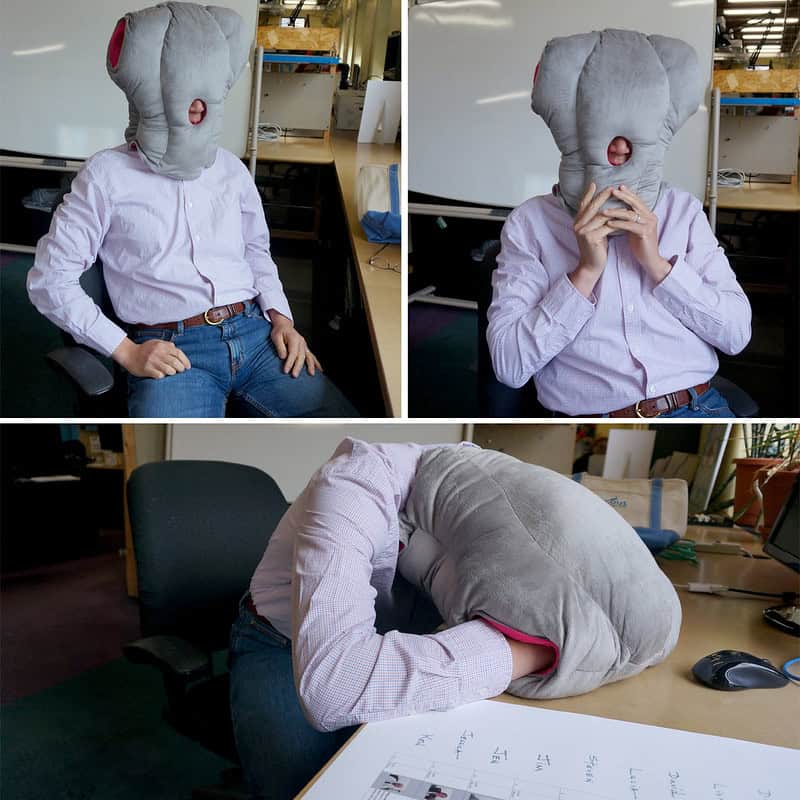Discoveries of hidden treasures in ancient tombs have fascinated historians and archaeologists for centuries. These remarkable finds offer a glimpse into the lives, beliefs, and artistry of long-gone civilizations. From golden masks to intricately crafted jewelry, these artifacts reveal the opulence and cultural richness of their times. Each discovery not only holds immense historical value but also carries significant monetary worth, reflecting the advanced craftsmanship and materials used. Here, we explore some of the most extraordinary treasures unearthed from ancient tombs around the world.
Tutankhamun’s Golden Mask
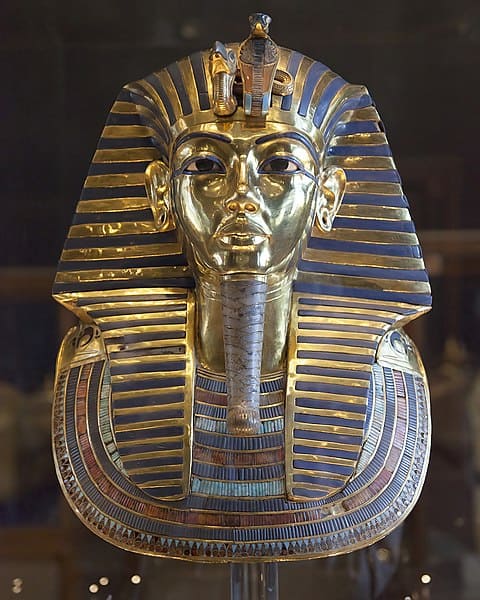
The golden mask of Tutankhamun is one of the most iconic artifacts from ancient Egypt. Discovered in 1922 by Howard Carter, this mask is made of solid gold and inlaid with precious stones. It was placed over the head and shoulders of the young pharaoh’s mummy. Valued at over $2 million, the mask’s intricate craftsmanship and historical significance make it priceless. It offers a glimpse into the opulence of the ancient Egyptian royalty.
Terracotta Army of Emperor Qin Shi Huang
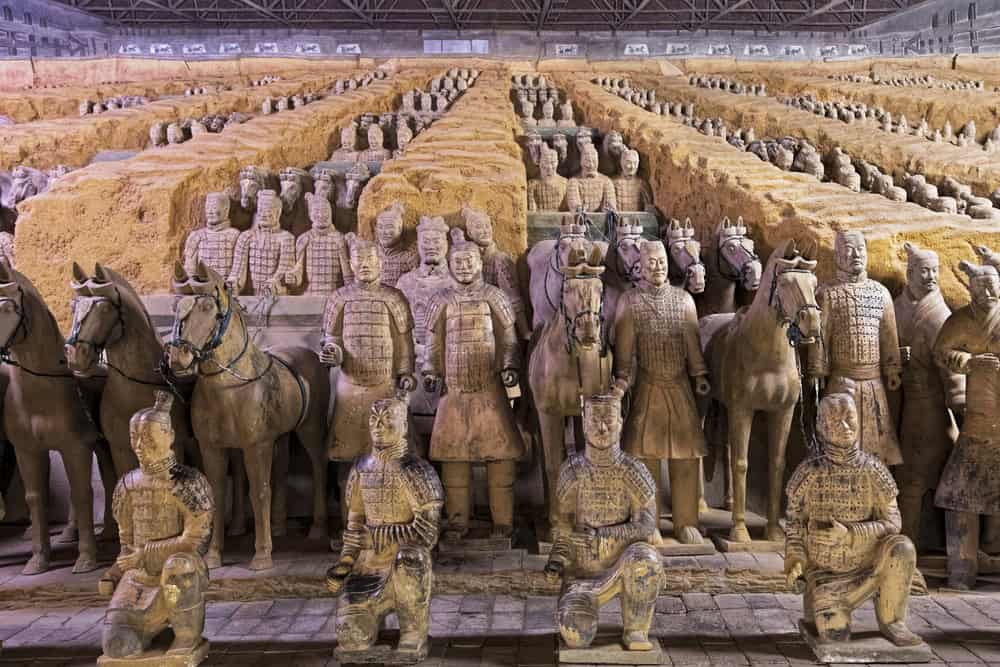
Discovered in 1974 by farmers in Shaanxi province, the Terracotta Army consists of thousands of life-sized figures buried with China’s first emperor, Qin Shi Huang. Each figure is unique, representing soldiers, horses, and chariots meant to accompany the emperor in the afterlife. This massive funerary art has an estimated value of over $500 million. The discovery provides invaluable insight into ancient Chinese military practices and artistry. It is considered one of the greatest archaeological finds of the 20th century.
The Mask of Agamemnon
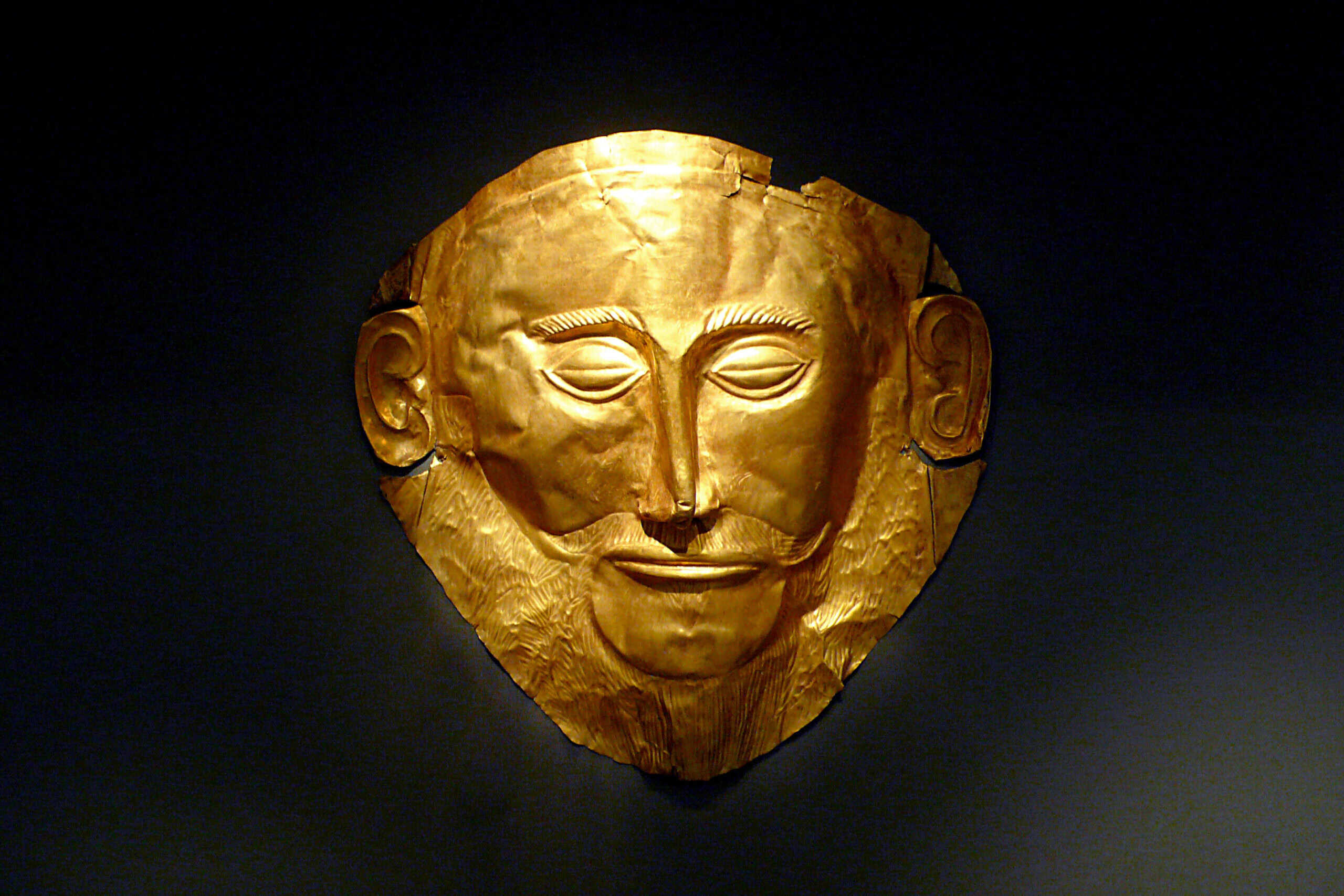
The Mask of Agamemnon was discovered in 1876 by Heinrich Schliemann in Mycenae, Greece. This gold funeral mask, believed to belong to the legendary king Agamemnon, dates back to the 16th century BCE. Its detailed facial features and craftsmanship highlight the Mycenaean civilization’s sophistication. Valued at approximately $1 million, the mask is a testament to ancient Greek funerary practices. The discovery fueled interest in Homeric legends and Mycenaean culture.
The Royal Tombs of Ur

Excavated in the 1920s by Leonard Woolley, the Royal Tombs of Ur in modern-day Iraq revealed a wealth of treasures. Among the finds were gold jewelry, elaborate headdresses, and the famous Standard of Ur. These artifacts, dating back to 2600 BCE, illustrate the advanced craftsmanship of the Sumerians. With an estimated value of over $10 million, these treasures highlight the wealth and artistry of ancient Mesopotamia. The tombs also provided crucial insights into early urban societies.
King Tutankhamun’s Dagger
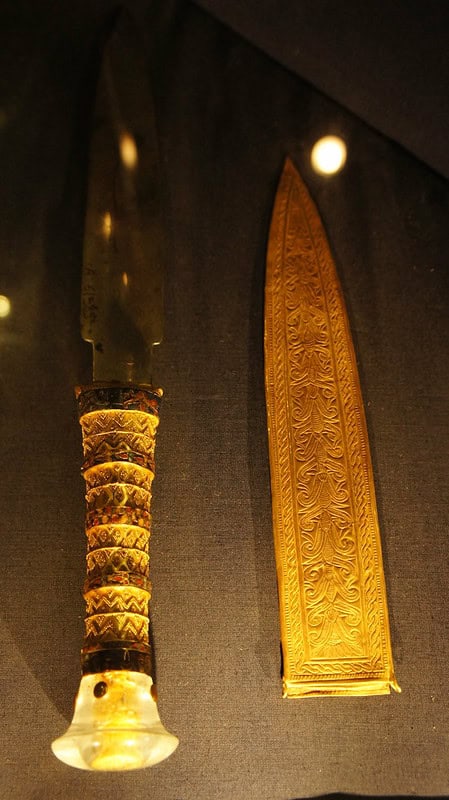
Found within Tutankhamun’s tomb, this iron dagger is remarkable for its composition and craftsmanship. Made from meteoritic iron, the blade reflects advanced metallurgical knowledge. The dagger is adorned with a gold handle and intricate designs. Its estimated value is around $2 million, but its true worth lies in its historical and scientific significance. This artifact highlights the technological prowess of ancient Egypt.
Queen Puabi’s Cylinder Seal

Queen Puabi’s tomb at Ur revealed a cylinder seal made of lapis lazuli, depicting intricate scenes. This seal, used to mark ownership or authority, dates back to 2600 BCE. Its artistry and the rarity of the material make it a valuable find, estimated at $500,000. The seal provides insights into the administrative practices of ancient Mesopotamia. It underscores the importance of women in Sumerian society.
The Tomb of the Unknown Soldier in Vergina
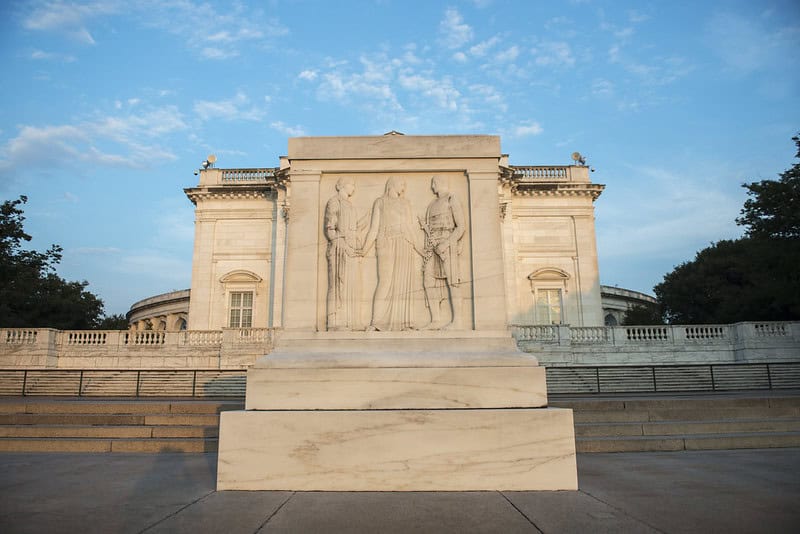
Discovered in 1977, the tomb in Vergina, Greece, is believed to belong to a Macedonian royal, possibly King Philip II. Among the treasures found were golden larnakes (funerary boxes) and a golden crown. The artifacts, dating to the 4th century BCE, highlight the opulence of the Macedonian court. Valued at over $5 million, these treasures shed light on the era of Alexander the Great. The tomb’s contents reflect the wealth and power of ancient Macedonia.
The Treasure of Priam
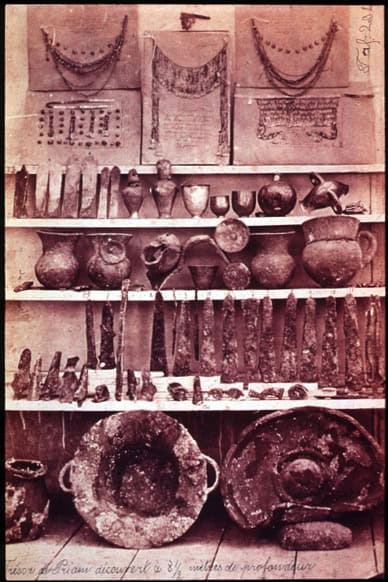
Unearthed by Heinrich Schliemann in Troy, Turkey, the Treasure of Priam includes a collection of gold and other artifacts. These items, dating back to 2500 BCE, are attributed to the legendary King Priam of Troy. The treasure includes diadems, earrings, and other intricate jewelry. Valued at around $10 million, these artifacts are significant for their historical and literary connections. The discovery fueled the belief in the historical basis of Homer’s epics.
The Oxus Treasure
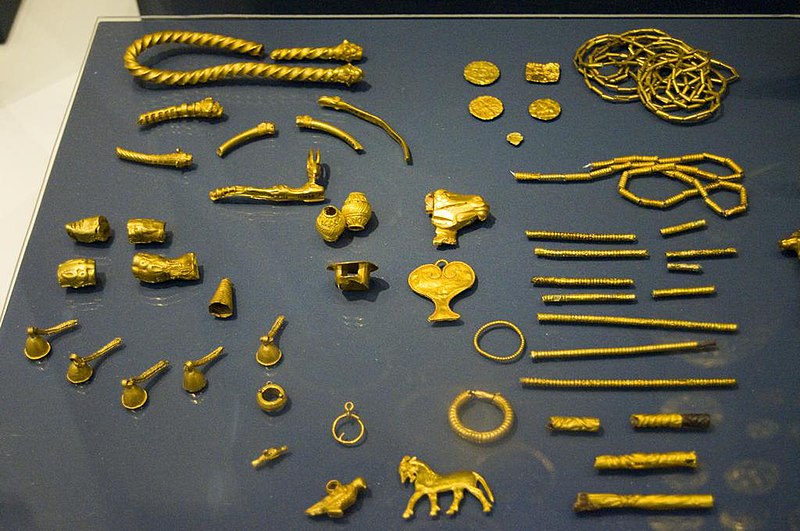
The Oxus Treasure, found near the Oxus River in Tajikistan, is a collection of Persian gold and silver artifacts. Dating from the 5th to 4th centuries BCE, the treasure includes coins, jewelry, and ceremonial items. Its estimated value exceeds $50 million. The artifacts reflect the artistry and wealth of the Achaemenid Empire. The discovery provides insights into Persian culture and trade.
The Nefertiti Bust

Discovered in 1912 by German archaeologist Ludwig Borchardt, the bust of Nefertiti is a stunning representation of the ancient Egyptian queen. Made of painted limestone, the bust dates back to 1345 BCE. Its estimated value is around $10 million, but its cultural and artistic significance is immeasurable. The bust is celebrated for its exquisite craftsmanship and lifelike detail. It remains one of the most iconic symbols of ancient Egyptian art.
The Sutton Hoo Helmet

Found in 1939 in Suffolk, England, the Sutton Hoo helmet is a masterpiece of Anglo-Saxon craftsmanship. Dating to the early 7th century, the helmet was part of a ship burial believed to belong to King Rædwald. Its intricate designs and historical context give it an estimated value of $5 million. The helmet provides valuable insights into early medieval England. It is a key artifact in understanding the Anglo-Saxon period.
The Death Mask of Pakal the Great
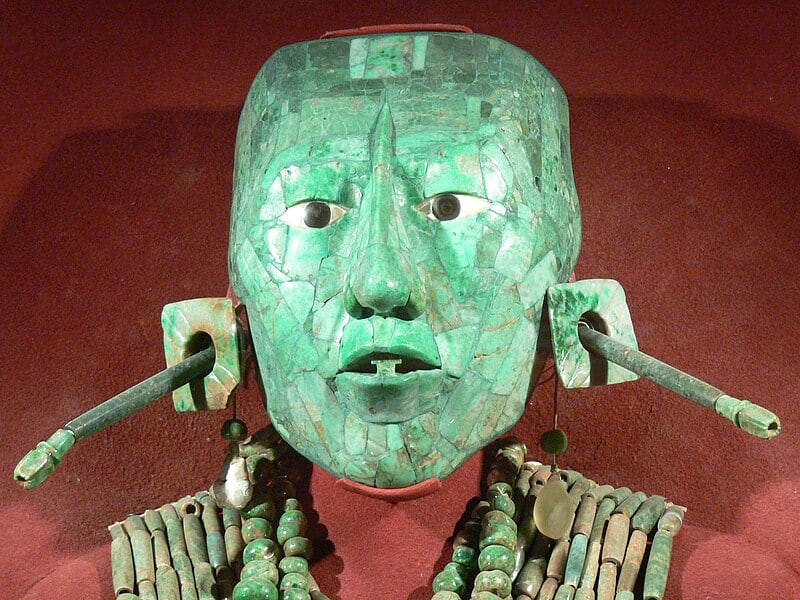
Discovered in the Temple of the Inscriptions in Palenque, Mexico, the death mask of the Maya ruler Pakal the Great is made of jade and shell. This mask, dating to the 7th century, was placed over Pakal’s face in his sarcophagus. Valued at $2 million, the mask is significant for its artistry and material. It reflects the importance of jade in Maya culture. The discovery enhances our understanding of Maya funerary practices.
The Mummy of Lady Dai
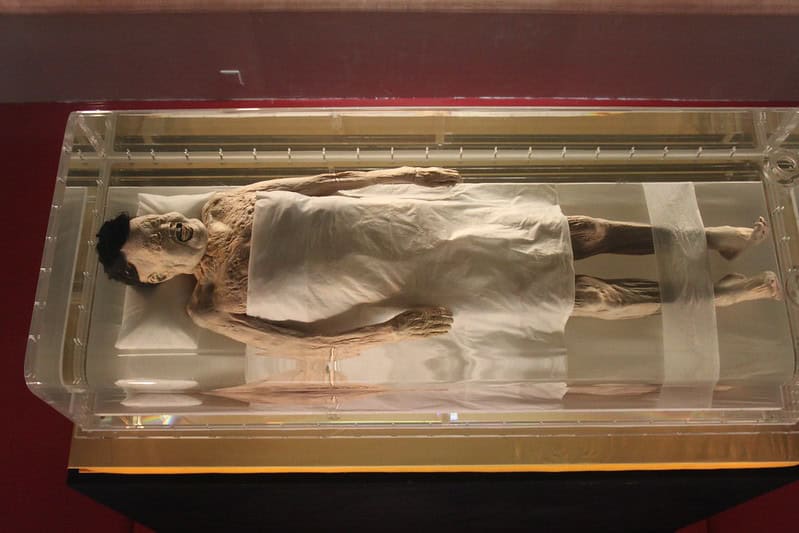
Unearthed in 1971 in Mawangdui, China, the tomb of Lady Dai (Xin Zhui) revealed a remarkably well-preserved mummy. Alongside her body were hundreds of artifacts, including silk garments, lacquerware, and food items. The tomb dates back to the Han Dynasty (2nd century BCE). The artifacts, valued at over $10 million, provide a detailed view of Han Dynasty life. The preservation of Lady Dai offers unique insights into ancient Chinese embalming techniques.
The Gold of Varna
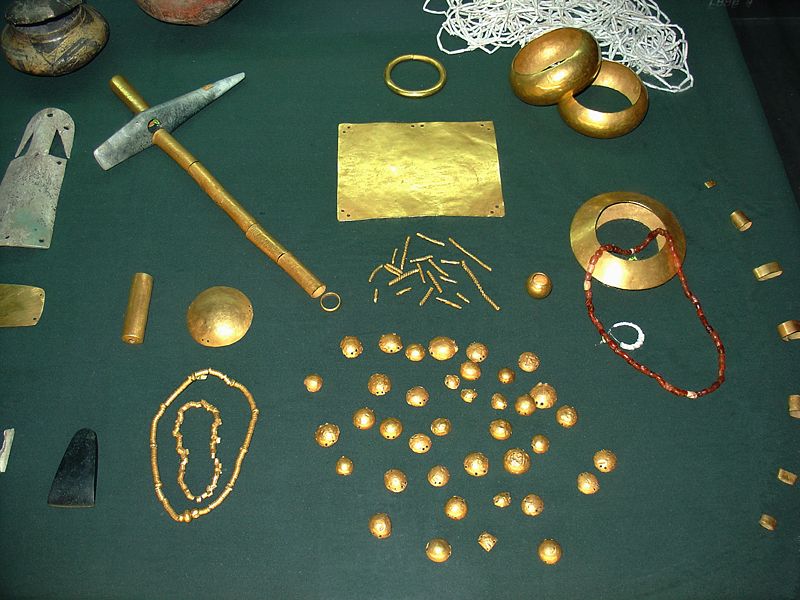
Discovered in Bulgaria in 1972, the Varna Necropolis contained a vast array of gold artifacts dating back to 4600 BCE. These items, including jewelry and weapons, represent some of the oldest known worked gold. The treasure’s value is estimated at over $5 million. The discovery sheds light on the advanced metallurgical skills of prehistoric Europe. It highlights the early development of social hierarchies and trade networks.
The Tomb of Fu Hao
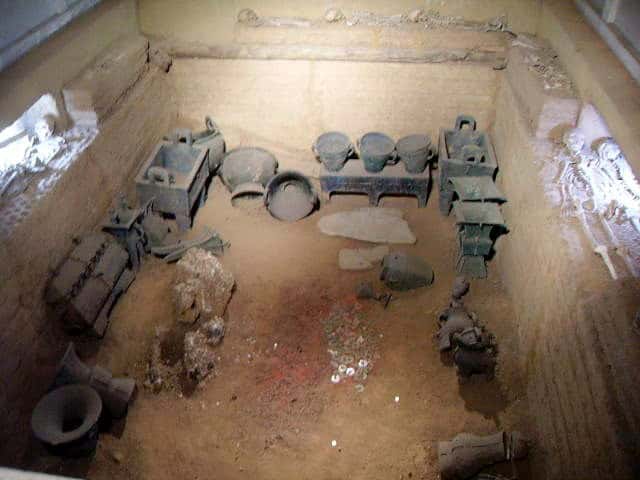
The tomb of Fu Hao, a consort of the Shang Dynasty king Wu Ding, was discovered in 1976 in Anyang, China. Among the treasures were bronze vessels, jade artifacts, and weapons. Dating back to the 13th century BCE, these items reflect Fu Hao’s status and power. Valued at over $10 million, the tomb’s contents provide insights into Shang Dynasty society and ritual practices. Fu Hao’s role as a military leader and priestess is evident from the artifacts.
The Silver Scrolls of Jerusalem
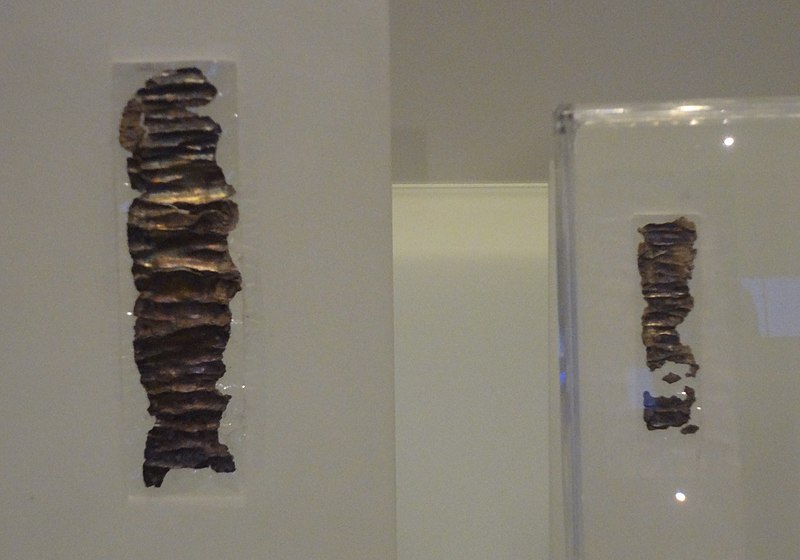
Discovered in 1979 in a burial cave in Jerusalem, the Silver Scrolls are tiny amulets inscribed with biblical texts. Dating back to the 7th century BCE, they are some of the oldest known biblical manuscripts. Valued at around $3 million, these scrolls are significant for their historical and religious context. The inscriptions provide insights into early Jewish practices and beliefs. The discovery has profound implications for biblical archaeology.
The Jewelry of Queen Amanishakheto
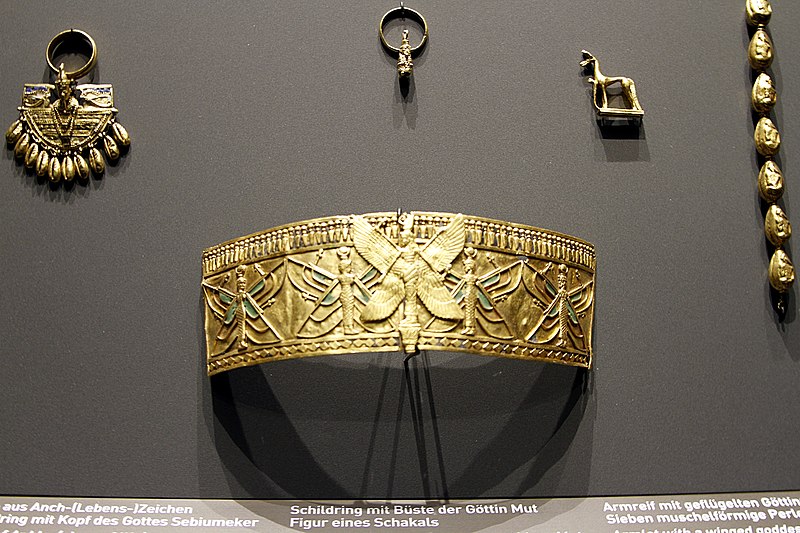
Found in her pyramid at Meroë, Sudan, the jewelry of Queen Amanishakheto dates back to the 1st century BCE. The treasure includes gold and silver ornaments, necklaces, and rings. Valued at over $5 million, these items reflect the wealth and artistry of the Kingdom of Kush. The discovery highlights the cultural connections between Kush and ancient Egypt. It provides insights into the role of queens in Nubian society.
The Tablets of Ebla
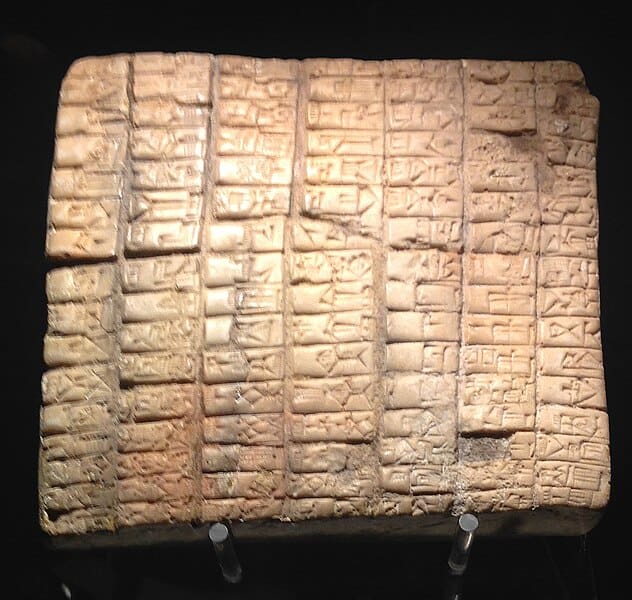
Discovered in the 1970s in modern-day Syria, the Ebla tablets are a collection of cuneiform texts dating back to 2500 BCE. These tablets provide detailed records of the economic, political, and social life of the ancient city of Ebla. Valued at over $10 million, they are significant for their historical content. The discovery has reshaped our understanding of early Semitic languages and cultures. The tablets offer a wealth of information on ancient Near Eastern civilizations.
This article originally appeared on Rarest.org.
More From Rarest.Org
In a world brimming with innovation, some inventions stand out not just for their utility but for their sheer uniqueness. From practical gadgets that solve everyday problems to quirky creations that add a touch of humor to our lives, these weird inventions push the boundaries of creativity. Read more.
Disney collectibles have captivated fans for decades, offering a tangible piece of the magic that defines the beloved brand. From vintage items tied to the early days of Disneyland to limited edition memorabilia celebrating iconic characters, these collectibles hold a special place in the hearts of Disney enthusiasts. Read more.
Canada boasts some of the most affluent neighborhoods in the world. These high-income districts are renowned for their luxurious homes, beautiful landscapes, and top-tier amenities. Read more.

